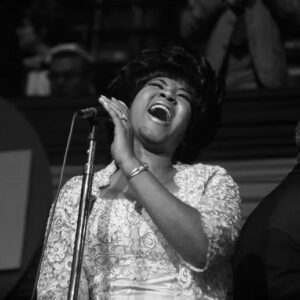Michael Jackson’s place in pop culture history is irrefutable. Known primarily for his revolutionary contributions to music, dance, and entertainment, Jackson’s influence transcended the stage and studio. Yet, beyond his iconic songs, jaw-dropping performances, and humanitarian efforts, Jackson was also a shrewd investor with an uncanny knack for managing and growing his wealth. His most unexpected financial strategy, however, lay not in real estate or the music industry, but in the world of fine art. While many may associate the King of Pop with glittering stage costumes, moonwalking, and record-breaking albums, Jackson’s art collection tells a story of a visionary mind keenly attuned to both culture and commerce.
In a world where the rich and famous frequently invest in real estate, stocks, and luxury items, Michael Jackson recognized the intrinsic value of art as both a cultural expression and a financial asset. For Jackson, art was not just something to hang on a wall; it was a statement of personal identity, an investment vehicle, and a testament to his cultural legacy. The depth and diversity of his collection — from works by Andy Warhol and Jean-Michel Basquiat to lesser-known contemporary artists — spoke volumes about his eclectic tastes and sophisticated understanding of wealth management. But more than that, his art collection was a powerful symbol of his evolving legacy, one that would persist long after his untimely passing in 2009.
Michael Jackson’s Wealth Management Strategy
While most people associate Michael Jackson’s wealth with his music royalties, the singer was also savvy when it came to financial planning and asset diversification. At the heart of Jackson’s wealth management strategy was the idea of not only securing future earnings but also diversifying assets to ensure long-term financial stability. This strategy wasn’t purely about expanding his monetary portfolio but also about balancing his artistic identity with financial security.
Jackson, like many of the wealthiest individuals in the world, realized that owning tangible assets could serve as an effective hedge against market volatility. While many wealthy people invest in real estate, stocks, or other financial instruments, Jackson’s interest in art demonstrated his keen awareness of the power of cultural capital. Art, particularly works by established or emerging artists, holds the potential to appreciate over time. By purchasing art that not only spoke to his taste but also had the potential for future value, Jackson created a financial portfolio that was as diverse as it was rich.
The Diversity of Michael Jackson’s Art Collection
Michael Jackson’s art collection was not monolithic; it was a carefully curated mix of emerging and well-established artists from various backgrounds and styles. A standout feature of Jackson’s collection was his acquisition of works by some of the most important artists of the 20th century, including iconic figures like Andy Warhol and Jean-Michel Basquiat. These two artists, in particular, were known for their groundbreaking contributions to the art world, each in their own distinctive way. Warhol’s pop art and Basquiat’s raw, expressive graffiti-inspired pieces were not only visually stunning but also symbolized the shifting boundaries of contemporary art.
Jackson’s interest in Warhol, for example, was not simply an aesthetic preference. Warhol’s work represented the intersection of pop culture and fine art, something Jackson himself understood deeply. Warhol’s famous portrait of Jackson — part of a series that also included portraits of celebrities like Marilyn Monroe — was a powerful symbol of the King of Pop’s global stature. The piece, like other works in Jackson’s collection, reflected his understanding of art as a medium that could transcend traditional boundaries, blending popular culture with high culture. Similarly, Jackson’s Basquiat pieces, with their chaotic energy and political undertones, showcased his appreciation for art that was both challenging and innovative.
But Jackson’s collection was not limited to high-profile names. His collection also included works from emerging artists, lesser-known but promising talents, and pieces that spanned a variety of styles, from contemporary to abstract. This diversity not only demonstrated Jackson’s sophisticated taste but also his financial foresight. Emerging artists often represent an opportunity for significant financial gain as their works gain recognition and market value. By collecting a mix of both established and up-and-coming artists, Jackson positioned himself as an investor who understood the nuances of the art market, from its volatile trends to its long-term potential.
Art as a Long-Term Investment
In many ways, Michael Jackson’s art collection can be viewed as part of a larger long-term financial strategy. Art, as an asset class, has proven itself to be a stable and, at times, extremely profitable investment. Unlike stocks or bonds, which can fluctuate dramatically based on market forces, fine art tends to appreciate over time, particularly when it is tied to high-profile artists or pieces with historical significance. For Jackson, investing in art was a way to ensure that his wealth could grow even after his musical career was over — and even after his death.
One of the key features of Jackson’s art collection was his awareness of art’s investment potential. Works by artists like Warhol and Basquiat have seen significant increases in value since Jackson’s acquisitions. In fact, following Jackson’s death, some of these works have been sold for millions of dollars at auction. While Jackson was known for his eccentric tastes, his ability to recognize the future financial potential of certain pieces speaks to his sophisticated understanding of wealth management. The pieces in his collection were not merely for personal enjoyment; they were also strategic investments that, over time, appreciated significantly in value.
Art as a Statement of Legacy
Perhaps the most profound aspect of Michael Jackson’s art collection was its role as a reflection of his legacy. Beyond its financial implications, Jackson’s collection was an expression of his personality, values, and interests. Art, in many ways, is a personal statement, and Jackson’s collection was no exception. The works he acquired were a visual representation of his evolving identity, his cultural impact, and his connection to a broader artistic tradition.
Jackson’s collection was also part of his broader strategy to cement his legacy beyond his music. While his impact on the music industry is undeniable, Jackson understood the power of art to transcend genres and eras. The works in his collection were not just about adorning his home or his private spaces; they were meant to communicate something deeper — a commitment to culture, innovation, and timelessness. By investing in art, Jackson ensured that his cultural legacy would endure far beyond the fleeting nature of pop music or celebrity.
For Jackson, art was not just an investment in wealth but also a means of shaping how future generations would perceive him. Like other wealthy individuals who use art as a tool for legacy-building, Jackson’s art collection contributed to a larger narrative about who he was and what he stood for. It spoke to his belief in creativity, innovation, and the power of visual storytelling, making his collection an integral part of his broader artistic and cultural impact.
The Impact of MJ’s Art Collection on His Estate
Following Michael Jackson’s death in 2009, his art collection became one of the key assets in his estate, attracting significant interest from collectors, museums, and auction houses. The sale of Jackson’s art, along with other valuable assets like his music catalog, served as a way to sustain his estate and continue to generate income even after his passing.
One of the most notable sales involved Jackson’s Warhol portrait, which was sold for a reported $20 million. Other pieces, including works by Basquiat, fetched millions of dollars at auction, ensuring that Jackson’s financial legacy would continue. The fact that Jackson’s art collection remained valuable posthumously highlights how strategic asset management — in this case, the acquisition of valuable artwork — can provide lasting financial returns.
Moreover, the sale of Jackson’s artwork has helped cement his place in both the art world and the broader cultural landscape. While many people may think of Michael Jackson primarily as a musician, his involvement in the world of art has allowed him to be remembered not just for his groundbreaking music but also for his role in fostering a deeper connection between popular culture and the fine arts.
Conclusion
Michael Jackson’s art collection was far more than just a display of wealth or a means of personal expression; it was a strategic, long-term financial investment and a significant aspect of his legacy. By acquiring works from some of the most influential artists of his time, Jackson not only diversified his wealth but also solidified his place in the cultural and artistic worlds. His understanding of the financial value of art, combined with his love for culture and innovation, allowed him to build a collection that would continue to generate value long after his death.
Jackson’s story serves as a powerful reminder that wealth management is not just about accumulating assets; it’s about making thoughtful, strategic choices that reflect both personal taste and long-term vision. In the case of Michael Jackson, his investment in art speaks to the ultimate intersection of commerce and creativity, showing that even the most iconic entertainers can leverage their passion for culture to secure a lasting financial legacy.





